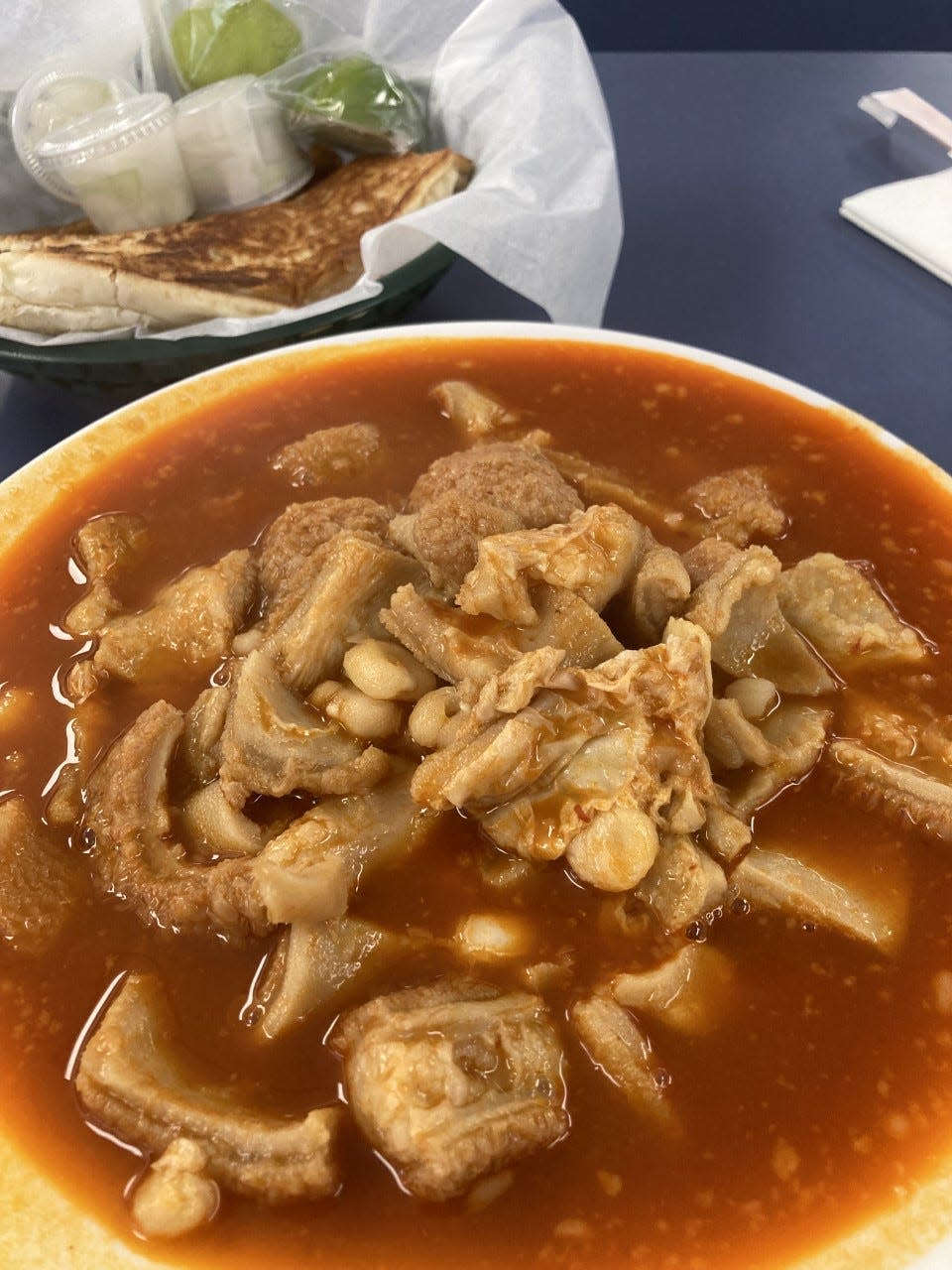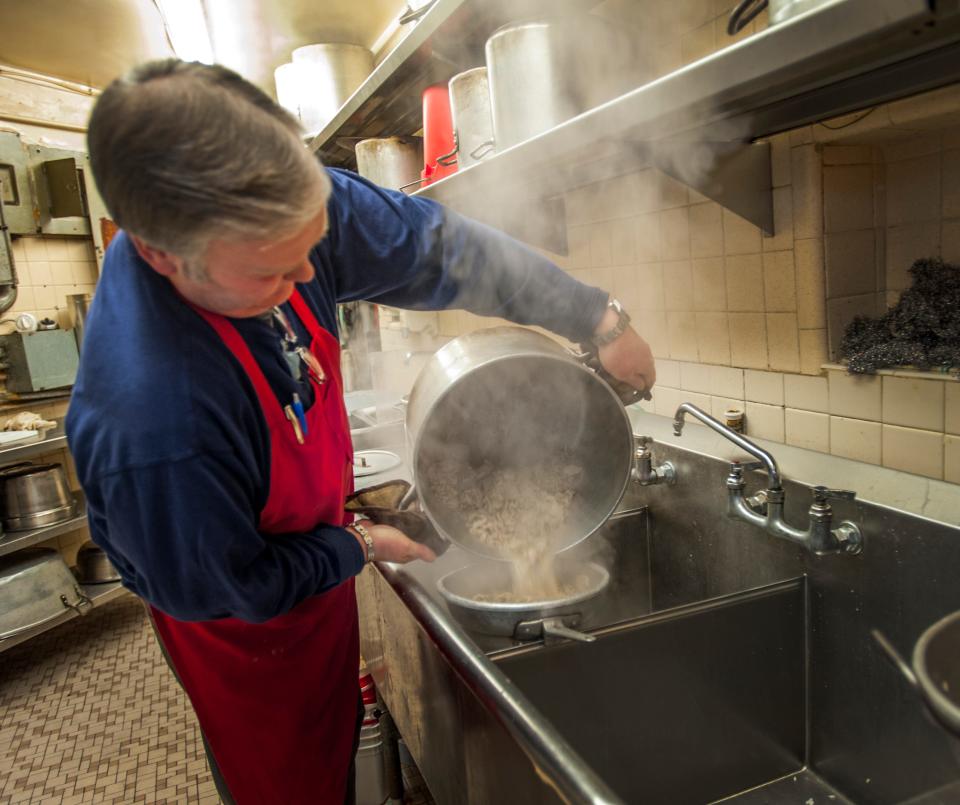Lost Recipes: The inner beauty of cooking pig parts
We’re back with even more pig parts to explore in the second half of our Lost Recipes look at all things hog, or at least all things besides the normal stuff like bacon, pork chops and ham.
Last week, we took a look at pig ears, pig knuckles (feet) and pig tails (no, not the hairstyle).
This week, we’re diving deeper into this precious pig that gives literally everything it has to us.
Tripe

We’re getting into hog innards here, and starting with tripe — the inner stomach lining of meat animals. Pork, beef and lamb varieties were most often used. It's available fresh, pickled and canned.
Here’s a recipe from 1943 for Tripe a la Creole:
1 pound tripe
Water
3 tablespoons chopped green pepper
3 tablespoons chopped onion
3 tablespoons flour
1 ½ cups tomatoes
1 teaspoon salt
¼ teaspoon pepper
Cover the tripe with water and let it simmer for two hours, or until it has a clear, jelly-like appearance. Drain and cut the tripe into two-inch pieces. In another pan, melt fat and cook green pepper and onion until tender. Add flour, then stir until smooth. Add tomatoes, stirring constantly until thickened. Season and add the tripe, and simmer for 10 minutes. This serves six.
More: Lost Recipes: These old treats are so berry good
Chitterlings

In 1949, Atticus Mullin had the following to say about cooking pork intestines, which we in the South all know as chitlins — or properly spelled “chitterlings”:
“Now anybody who would fry a chitterling in butter would murder his great aunt. Anybody who would cut a chitterling into bits before frying would murder his great uncle without compunction. They just don’t do those things in the South.”
Mullin was pretty passionate about chitterlings, calling them “the most desirable of this earth’s ‘vittles.’”
But considering what a chitterling does inside a living pig, there are some risks. The Centers for Disease Control and Prevention warns cooks to boil raw chitterlings in water for at least five minutes before cleaning them. This reduces germs that may get on your hands and counterspace.
More: Lost Recipes: Sip your way to allergy relief with these drinks
Cleaning chitterlings is no simple task. You’ve got to carefully examine them and rinse them with hot water to get rid of any fecal matter.
After they’re clean and when you’re ready to cook them — battered and deep fried or boiled — chitterlings should be made well done and tender. Save rare and medium for steaks.
In 1954, the Advertiser got an expert recipe from a chitterling champion at Montgomery’s No. 2 Fire Station, Assistant Chief T.A. Henderson:
Take fresh or frozen chitterlings and cut them into short strips. Pressure cook them until tender in a seasoning of red pepper. After they’re tenderized, dip them in a batter made from egg, flour and milk. Then fry the chitterlings in deep fat until they’re brown and crisp. Serve with a dressing of mustard or pepper sauce.
This is a food that might be best prepared outside, from cleaning to cooking. As the Advertiser wrote in 1979, “A boiling pot of pork innards generates a peculiar odor that usually discourages indoor cooking even in the coldest weather.”
Hog’s head
Yes, even the hog head gets used in recipes, including hog head cheese — which isn’t cheese at all, and is also known as souse. It’s meat from a boiled hog’s head. Hog head cheese is the meat suspended in gelatin. Souse is the same meat, but it has vinegar in it.
Hog’s head is also used in this 1943 recipe for scrapple:
2 cups of cooked ground pork – made from hog’s head, plus pig’s feet, liver and heart
1 quart water
1 ½ cups wheat cereal or cornmeal
1 teaspoon salt
1` tablespoon minced celery leaves
¼ cup minced parsley
½ teaspoon sage
2 eggs
Cracker crumbs
4 tablespoons lard or drippings
Simmer the hog’s head and other pork pieces in water to cover until the meat is tender enough to slip from the bones. Remove meat, cool and put through food chopper. Measure liquid in which meat was cooked and add enough water to make a quart. Bring that to a boil. Add wheat cereal or cornmeal slowly, stirring constantly. Add the seasonings and meat. Pour the mixture into a loaf pan and chill until set. Slice, then dip in cracker crumbs. Brown until crisp in hot drippings.
Brain
From inside the hog head comes a breakfast delicacy. Yes, it’s the brain.
The Advertiser ran a feature from the Anniston Star in 1987 on Jim Woodgett of Wedowee, who would take hogs from slaughter to porkchops. On the subject of hog brains, he said:
“They’re real good. You scramble them up with some eggs in the morning.”
Jowl

Probably the luckiest part of the pig is the jowl, which has a New Year’s Day tradition wrapped around it. According to a 1944 story, you’re supposed to eat hog jowl with black-eyed peas for good luck and money. At least that’s the superstition.
It goes back much further. In 1918, the Advertiser wrote: “Hog jowl is the symbol of economic liberty in Alabama.”
In reality, hog jowl is a portion of the pig’s cheek that’s kinda similar to bacon in composition, with meat layered between fat strips. When you slice it up, it cooks crispy. Some folks call it “poor man’s bacon,” which to me is kind of ironic given that it’s supposed to help usher cash into your pockets in the coming year.
IF YOU TRY IT
If you decide to try one of these lost recipes please send us a photo and a note on how it went. Send it in an email titled "Lost Recipes" to Montgomery Advertiser reporter Shannon Heupel at sheupel@gannett.com.
This article originally appeared on Montgomery Advertiser: Lost Recipes: The inner beauty of cooking pig parts

